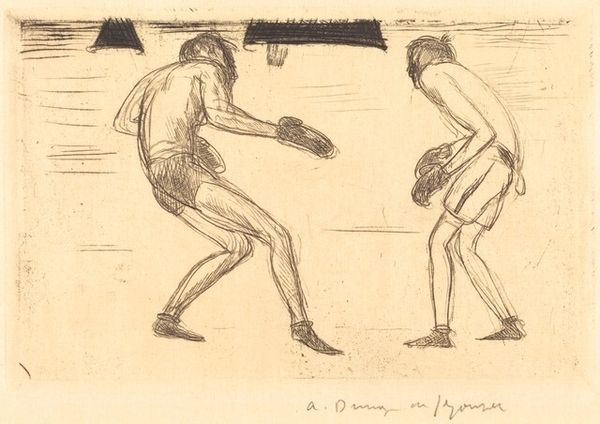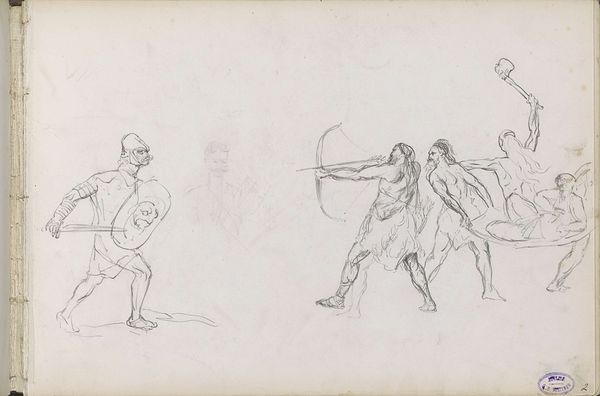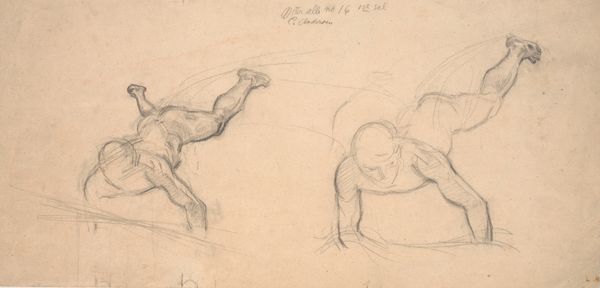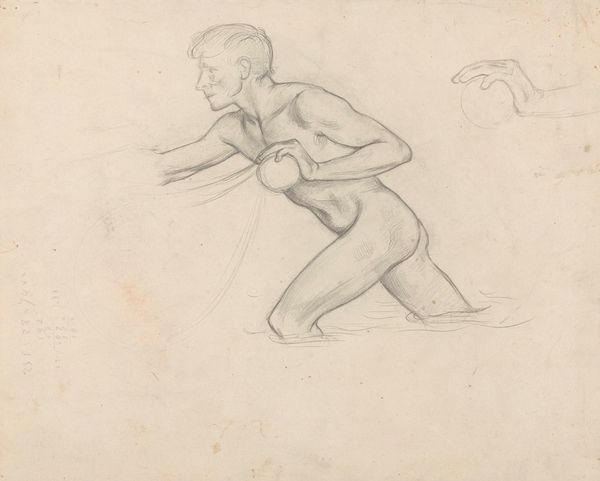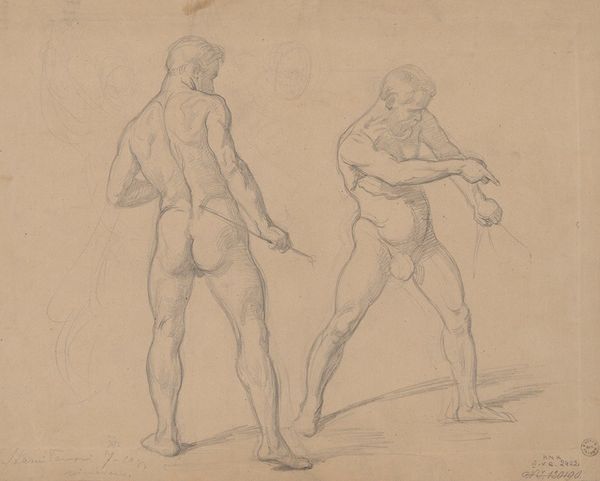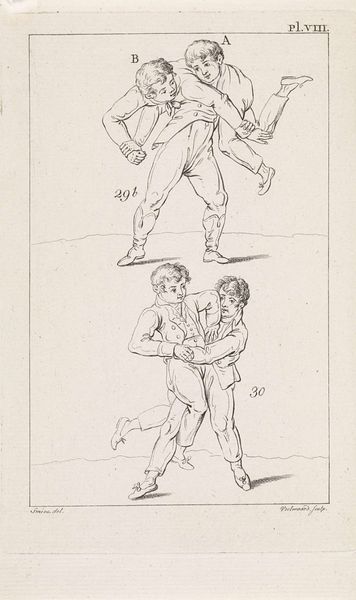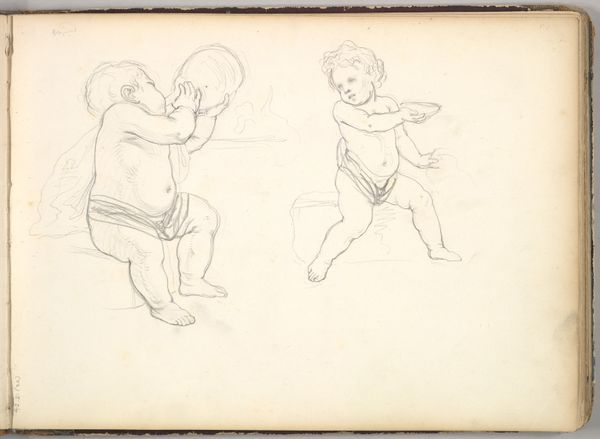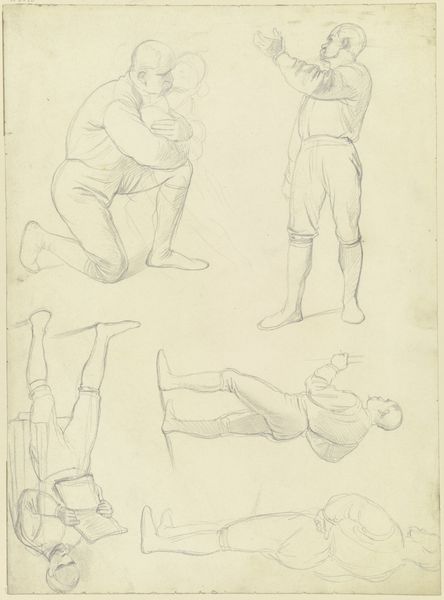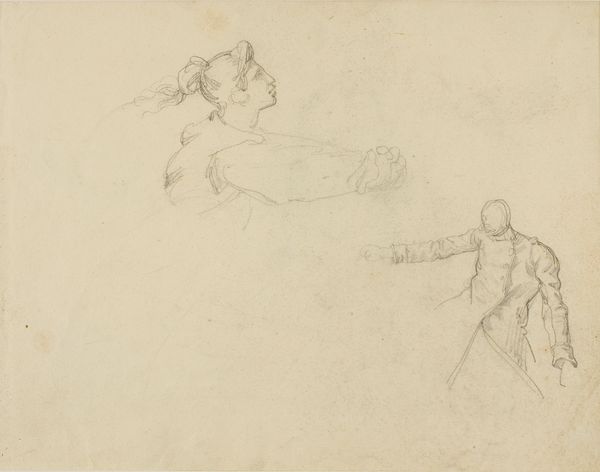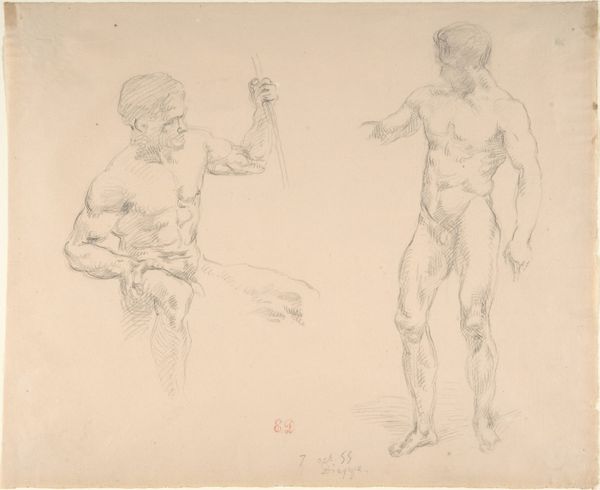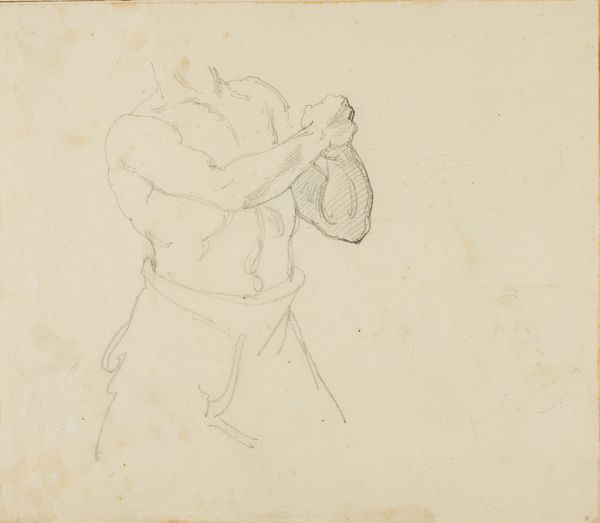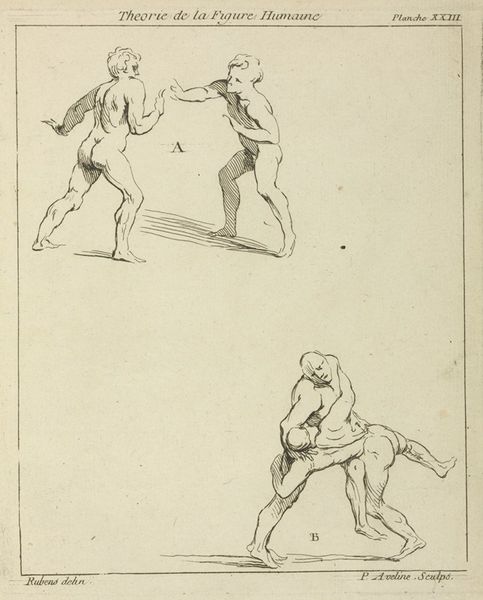
drawing, print, paper, dry-media, pencil, graphite
#
pencil drawn
#
drawing
# print
#
pencil sketch
#
figuration
#
paper
#
dry-media
#
pencil drawing
#
romanticism
#
pencil
#
line
#
graphite
#
history-painting
#
academic-art
#
realism
Dimensions: 217 × 282 mm
Copyright: Public Domain
Editor: Here we have Théodore Géricault's "Two Boxers Sparring," created around 1818 using pencil on paper. It's a surprisingly delicate sketch, given the raw subject matter. The men seem caught mid-action. What can you tell us about its context? Curator: This piece offers an interesting lens through which to view early 19th-century society. Géricault’s interest in boxing reflects a broader fascination with physical prowess and the spectacle of sport that was emerging. What does it tell us about class? These weren't gentlemen engaging in fisticuffs, were they? Editor: Well, they're definitely not in a parlor! It seems more like a public spectacle, maybe even a staged event. So, you're saying that its appeal might be linked to its accessibility and popularity among diverse social groups? Curator: Precisely! Think about the social dynamics at play. Boxing provided an arena, literally, for men to climb the ranks, garnering respect and, at times, monetary reward. It also represented a kind of primal struggle removed from the regulated world. Is there something subversive, you think, about this focus on the physicality of men in art? Editor: Subversive...in a way, maybe. It pulls away the veneer of Romanticism to expose a rawer side of life, quite unlike, say, portraits of aristocrats. But wasn't Géricault known for dramatic and somewhat theatrical scenes? Curator: Absolutely. He was acutely aware of the power of imagery to evoke emotions and provoke thought. Boxing, with its inherent drama and potential for both glory and tragedy, fit perfectly within his artistic vision and the developing cultural fascination. These depictions could simultaneously glorify the individual and serve as a critical commentary on the spectacle. Editor: It's interesting how a seemingly simple sketch can open up so many questions about society and the role of art itself. Curator: Indeed. By considering the social and historical context, we can gain a deeper understanding of Géricault’s work and the culture that shaped it.
Comments
No comments
Be the first to comment and join the conversation on the ultimate creative platform.

